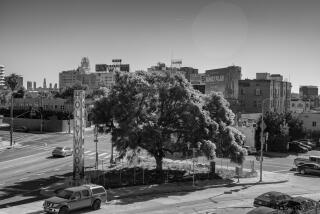Tracing the Christmas tree’s roots
- Share via
The Christmas tree remains a powerful symbol for many of us, a mandala of sorts, evoking emotions that can be traced through thousands of years of humankind and across many faiths.
“Christmas trees probably add more to mark the period of ‘peace on Earth, goodwill toward men’ than any other product of the soil,” says Ann Kirk-Davis, whose family has been raising and selling Christmas trees for generations. “This enduring tree symbol -- which is even older than Christianity and not exclusive to any one religion -- remains a firmly established part of our holiday customs, engaging not only our senses of sight, touch and smell, but also our sense of tradition.”
The Christmas tree has evolved from centuries-old traditions.
Ancient Egyptians, Romans, Chinese and other cultures used evergreens to mark the winter solstice, celebrate the end of the harvest year and symbolize the spirit of renewal. Druids used holly and mistletoe as symbols of eternal life.
In the 7th century in Germany, St. Boniface used the triangular shape of the tree to symbolize the Holy Trinity. In the Middle Ages, evergreens were decorated with red apples -- the paradise tree -- to mark the pagan festival of Adam and Eve.
In Riga, Latvia, in 1510, Martin Luther, inspired by the stars shimmering through the trees as he walked through the woods one wintry night, cut down a small tree, took it home and decorated it with candles for his children.
One of the first documented reports of Christmas trees in America was in 1747 among the German Moravian immigrants in Bethlehem, Pa. In 1825, the Saturday Evening Post noted the decorated trees in Philadelphia, and in 1842 candles, popcorn, nuts and homemade paper ornaments were used to decorate Christmas trees in Williamsburg, Va.
In 1851, a New York farmer, Mark Carr, cut a load of evergreens from the Catskills, hauled them to Manhattan and set up the first street corner Christmas tree lot in Greenwich Village. President Franklin Pierce put the first tree in the White House in the 1850s.
More to Read
Sign up for Essential California
The most important California stories and recommendations in your inbox every morning.
You may occasionally receive promotional content from the Los Angeles Times.













